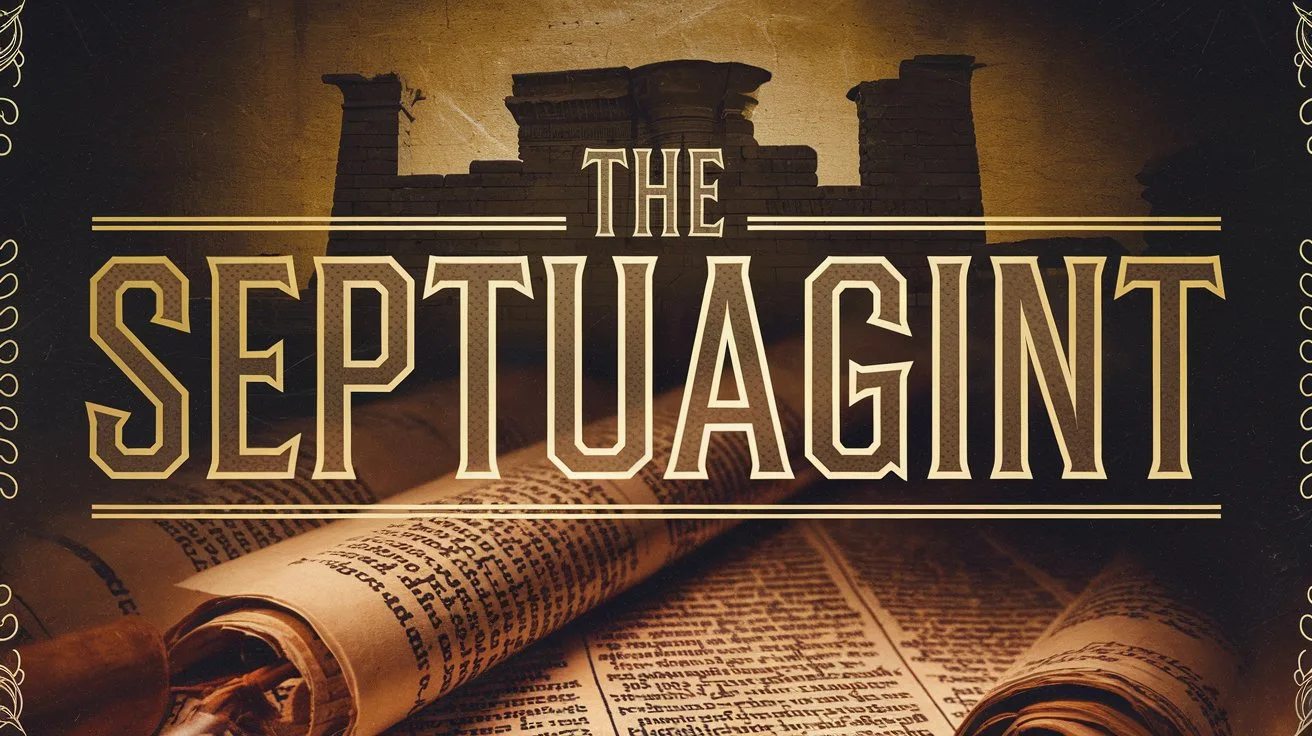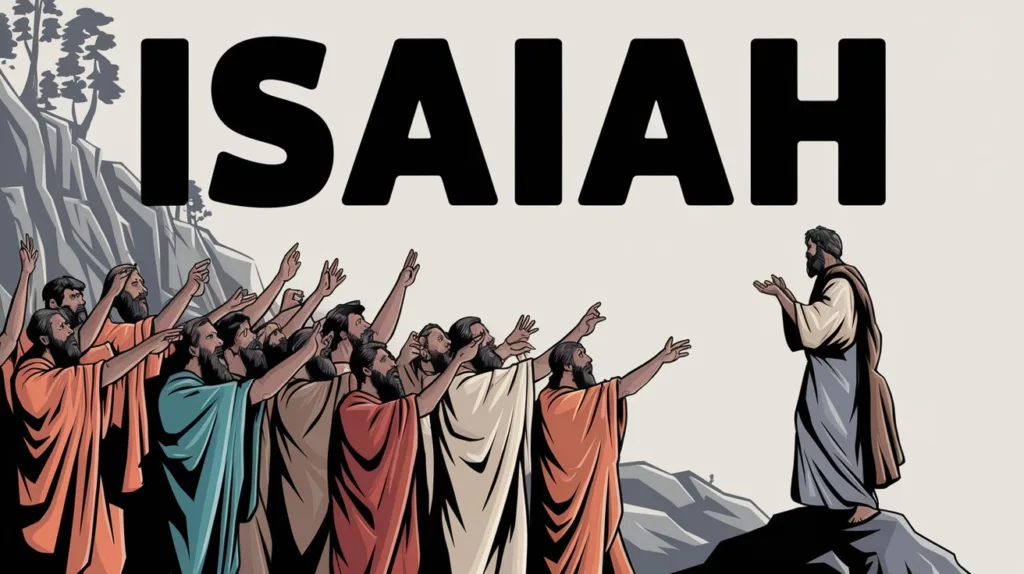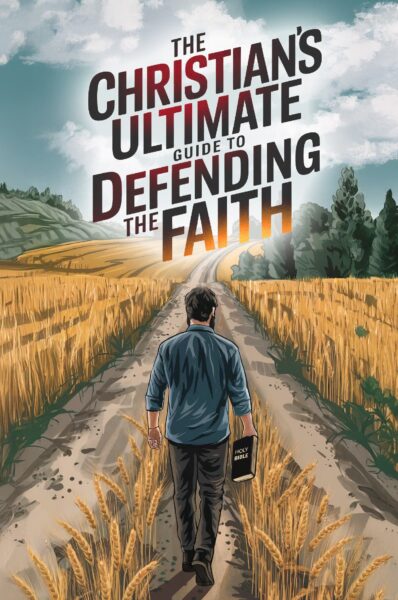The Septuagint (LXX) and the Masoretic Text (MT) represent two distinct traditions of the Old Testament. While many modern scholars and churches elevate the LXX, the Scriptures themselves, the apostles, and preserved Hebrew tradition affirm the Masoretic Text as accurate, consistent, and divinely preserved.
Genesis 5: Inflated Ages
The Masoretic Text gives a precise chronology from Adam to Noah. For example:
“Adam lived one hundred and thirty years, and begot a son in his own likeness.” (Genesis 5:3 – MT)
The LXX, however, inflates the numbers. For Adam:
“Adam lived two hundred and thirty years and begot a son.” (Genesis 5:3 – LXX)
These alterations appear in every generation from Adam to Noah, adding over 600 years and pushing the date of the Flood back more than a millennium. This skews biblical chronology and undermines the internal consistency of Scripture.
Genesis 11: Extra Names
In Genesis 11, the MT reads:
“Arphaxad lived thirty-five years and begot Shelah.” (Genesis 11:12 – MT)
The LXX inserts an additional generation:
“Arphaxad lived one hundred and thirty-five years and begot Cainan. Then Cainan begot Shelah.” (Genesis 11:12–13 – LXX)
This added “Cainan” is absent in the MT and all ancient Hebrew manuscripts, yet appears in some manuscripts of Luke (which were likely influenced by LXX sources). The insertion disrupts the lineage and introduces confusion in tracing Christ’s genealogy.
Isaiah 7:14: Virgin or Young Woman?
This is one of the strongest proofs that the LXX got it right, at least in this instance. The Masoretic Text reads:
“Behold, the virgin (almah) shall conceive and bear a Son, and shall call His name Immanuel.” (Isaiah 7:14 – MT)
The Hebrew word almah means a young woman of marriageable age, and in context implies virginity, but the word is not exclusively used for “virgin.”
The Septuagint (LXX), however, translates almah with the Greek word παρθένος (parthenos), which explicitly means “virgin.”
“Behold, the virgin (parthenos) shall conceive in the womb and bear a Son, and shall call His name Immanuel.” (Isaiah 7:14 – LXX)
This precise word is what Matthew quotes directly in Matthew 1:23:
“Behold, the virgin shall be with child, and bear a Son, and they shall call His name Immanuel,” which is translated, ‘God with us.’”
In this case, the LXX affirms the prophecy and strengthens the Messianic expectation. This is an exception to the general inconsistency of the LXX, which we should note for accuracy and integrity.
Psalm 22:16: Pierced Hands and Feet
Psalm 22 is one of the clearest Messianic prophecies in the Old Testament. The psalm opens with the very words spoken by Jesus on the cross: “My God, My God, why have You forsaken Me?” (Psalm 22:1; Matthew 27:46). As the psalm continues, it details the suffering, humiliation, and ultimate vindication of the Messiah. One verse in particular (Psalm 22:16) has sparked deep debate and carries profound prophetic weight.
Masoretic Text Reading
In the Hebrew Masoretic Text (MT), Psalm 22:16 reads:
“For dogs have surrounded Me; The congregation of the wicked has enclosed Me. Like a lion are My hands and My feet.” (Psalm 22:16 – MT)
The Hebrew phrase here is כָּאֲרִי יָדַי וְרַגְלָי (ka’ari yadai v’raglai), literally “like a lion my hands and my feet.” This phrase is problematic grammatically, because it lacks a verb. “Like a lion” followed by “my hands and my feet” has no clear action, which leaves translators to speculate: “they maul,” “they bind,” or “they seize.” But these are all insertions. The Masoretic reading appears awkward and incomplete.
Septuagint Reading
By contrast, the Greek Septuagint (LXX), a translation from Hebrew into Greek dating before Christ, renders Psalm 22:16 as:
“ὤρυξαν χεῖράς μου καὶ πόδας” or “They pierced My hands and My feet.” (Psalm 22:16 – LXX)
This reading supplies the verb “pierced,” which fits perfectly in the context of suffering and execution. The Greek word used, ōryxan, means “they dug” or “they pierced.” This text reads naturally and prophetically, describing a physical wounding of the Messiah.
Dead Sea Scrolls Evidence
The discovery of the Dead Sea Scrolls provided clarity. A fragment from Nahal Hever (dated around 50 BC–50 AD), designated as 5/6HevPs, contains Psalm 22:16. In this scroll, the Hebrew verb used is כָּרוּ (karu), meaning “they dug” or “they pierced.”
This aligns with the Septuagint and not the Masoretic Text. This shows that older Hebrew manuscripts circulating before and during the time of Christ used the verb “pierced,” validating the LXX rendering and reinforcing the prophetic nature of this verse.
New Testament Fulfillment
This verse finds fulfillment in the crucifixion of Christ. After the resurrection, Thomas said:
“Unless I see in His hands the print of the nails, and put my finger into the print of the nails, and put my hand into His side, I will not believe.” (John 20:25)
Jesus was pierced, not bound like a lion. Zechariah 12:10 also foretells:
“Then they will look on Me whom they pierced.”
Revelation confirms:
“Behold, He is coming with clouds, and every eye will see Him, even they who pierced Him.” (Revelation 1:7)
The harmony between Psalm 22:16 in the LXX, the Dead Sea Scrolls, and the New Testament leaves no doubt: the Messiah was to be pierced in His hands and feet.
Why the Masoretic Text May Have Changed
It’s possible that during the standardization of the Masoretic Text (circa 500–1000 AD), Jewish scribes altered certain texts that clearly identified Jesus as the Messiah. By replacing “they pierced” with “like a lion,” the prophetic clarity of Psalm 22:16 is blurred. This is not proven, but it is consistent with efforts to suppress Messianic interpretations post-Christ.
Psalm 22:16 is not a vague poetic metaphor. It is a precise, Spirit-inspired prophecy fulfilled at Calvary. The pierced hands and feet of Jesus were foretold in Scripture centuries before the invention of crucifixion as a Roman punishment. The Masoretic reading is problematic, grammatically strained, and disconnected from the crucifixion. But the Septuagint, affirmed by the Dead Sea Scrolls and fulfilled in the New Testament, confirms that the Messiah would be pierced.
Let the text speak clearly: Jesus is the Messiah, the One who suffered, whose hands and feet were pierced, and who rose again in glory.
The Book of Jeremiah: Shorter and Rearranged
One of the most striking divergences between the Septuagint (LXX) and the Masoretic Text (MT) is found in the book of Jeremiah. The LXX version of Jeremiah is approximately one-eighth shorter than the MT, or about 2,700 words less, and contains significant rearrangements in the order of chapters and prophecies.
According to the Masoretic Text, the traditional Hebrew arrangement of Jeremiah includes:
“The words of Jeremiah the son of Hilkiah, of the priests who were in Anathoth…” (Jeremiah 1:1 – MT)
From there, the chapters unfold chronologically and thematically with judgment against Judah, restoration promises, and prophecies of foreign nations toward the end (Jeremiah 46–51).
But in the LXX, many of these prophecies are reordered. For example:
The oracles against the nations (located in chapters 46–51 in the MT) are placed in the middle of the LXX Jeremiah (after chapter 25).
Also, certain phrases, repetitions, and prophetic messages found in the MT are missing in the LXX entirely.
MT Jeremiah: Judgment prophecies → Temple sermons → Personal laments → Foreign nations
LXX Jeremiah: Judgment prophecies → Foreign nations (earlier) → Shortened or omitted laments
This rearrangement not only distorts the narrative flow, but it also removes the carefully structured rhetorical and theological pattern the Holy Spirit inspired through Jeremiah. Some scholars have speculated that the LXX represents an earlier draft or a truncated version used in Alexandria, but Scripture never commends an “earlier version” of prophetic writings. It is the preserved Hebrew canon that the Jewish people recognized and that Jesus affirmed (Luke 24:44).
Jeremiah 29:10 – A Missing Restoration Promise
The Masoretic Text contains this critical prophecy of return:
“For thus says the LORD: After seventy years are completed at Babylon, I will visit you and perform My good word toward you…” (Jeremiah 29:10 – MT)
This prophecy is foundational to Daniel’s understanding in Daniel 9:2. The LXX, however, **shortens or omits** sections like these, muting the covenantal restoration themes woven throughout the prophetic books.
Jeremiah 33:14–26: The Davidic and Levitical Covenant
This passage is entirely **missing** in the Septuagint version:
“If you can break My covenant with the day and My covenant with the night… then My covenant may also be broken with David My servant.” (Jeremiah 33:20–21 – MT)
This removal severs a direct line between Jeremiah’s prophecy and the coming of the Messiah, Jesus Christ, who fulfills the Davidic covenant (Luke 1:32–33). The omission in the LXX undercuts key theological promises related to the priesthood and eternal kingship.
Such deletions and rearrangements demons/”>demonstrate the editorial liberties taken in the LXX tradition. Whether intentional or a result of scribal loss, it confirms that the Masoretic Text preserves the complete and inspired structure of Jeremiah as handed down by the prophets.
The Apocrypha
The LXX contains apocryphal books such as: Tobit, Wisdom of Solomon, Baruch, and 1 & 2 Maccabees.
These books are not part of the Hebrew canon. For example, 2 Maccabees 12:45 says:
“It is a holy and wholesome thought to pray for the dead.”
This contradicts Hebrews 9:27:
“It is appointed for men to die once, but after this the judgment.”
Jesus and the apostles never quoted from the Apocrypha, and the Jews never accepted it as Scripture.
The Dead Sea Scrolls Confirm the Masoretic Text
The Dead Sea Scrolls, discovered between 1947 and 1956 in caves near Qumran, include over 200 manuscripts of Old Testament books dating from approximately 200 BC to 100 AD. These scrolls provide a snapshot of the Hebrew Scriptures as they existed before the formalization of the Masoretic tradition. The remarkable takeaway is this: the Hebrew texts found in the Dead Sea Scrolls overwhelmingly confirm the accuracy and stability of the Masoretic Text.
Isaiah is Nearly Identical to the MT
The most famous example is the Great Isaiah Scroll, dated to around 125 BC. When compared to the Masoretic Text of Isaiah, it is nearly 95–99% identical, with differences being mostly spelling variations, minor grammatical shifts, or scribal slips. None of which affect doctrine or theology.
Key Messianic passages such as Isaiah 7:14 (“Behold, the virgin shall conceive”) and Isaiah 53 (“He was wounded for our transgressions…”) are fully preserved and match the MT, affirming the prophetic witness of the suffering Messiah and the reliability of the Hebrew prophetic record.
Psalm Scrolls are Structured as in the MT
The Psalms are also heavily represented in the Qumran findings. While some scrolls arrange psalms differently or include apocryphal psalms, the individual psalms themselves align closely with the Masoretic versions. For example, Psalm 22:16 (regarding pierced hands and feet) appears with readings that support the MT structure and wording.
Consistency in the Torah Scrolls
Fragments from Genesis, Exodus, Leviticus, Numbers, and Deuteronomy show a high level of consistency with the Masoretic Text. The minor differences that do exist are almost always in spelling or word order, not in content or meaning. This consistency testifies to the careful transmission of the Hebrew Scriptures long before the Masoretes formalized their meticulous system.
The Dead Sea Scrolls are not just historical artifacts, they are divine confirmations of God’s preservation. They show that the Hebrew Scriptures used during the Second Temple period were essentially the same as the Masoretic Text we have today. This directly contradicts the claim that the LXX reflects an older or more accurate version of the Old Testament. In fact, it proves the opposite.
Jesus quoted Scripture as authoritative, and the scrolls confirm that what He read was not significantly different from what we read in the MT. This is yet another testament to the truth of Psalm 12:6–7:
“The words of the Lord are pure words… You shall keep them, O Lord, You shall preserve them from this generation forever.”
My Final Thoughts
The Septuagint presents frequent and critical divergences from the preserved Hebrew text. Its inflated genealogies, altered prophecies, doctrinal contradictions, and apocryphal additions all show that it cannot be the foundation for sound doctrine. The Masoretic Text, confirmed by the Dead Sea Scrolls and honored by the early church and Christ Himself, stands as the reliable and preserved Word of God. Let us stand on the same Scriptures Jesus quoted, the Hebrew text faithfully handed down from generation to generation.





 Get the book that teaches you how to evangelize and disarm doctrines from every single major cult group today.
Get the book that teaches you how to evangelize and disarm doctrines from every single major cult group today.